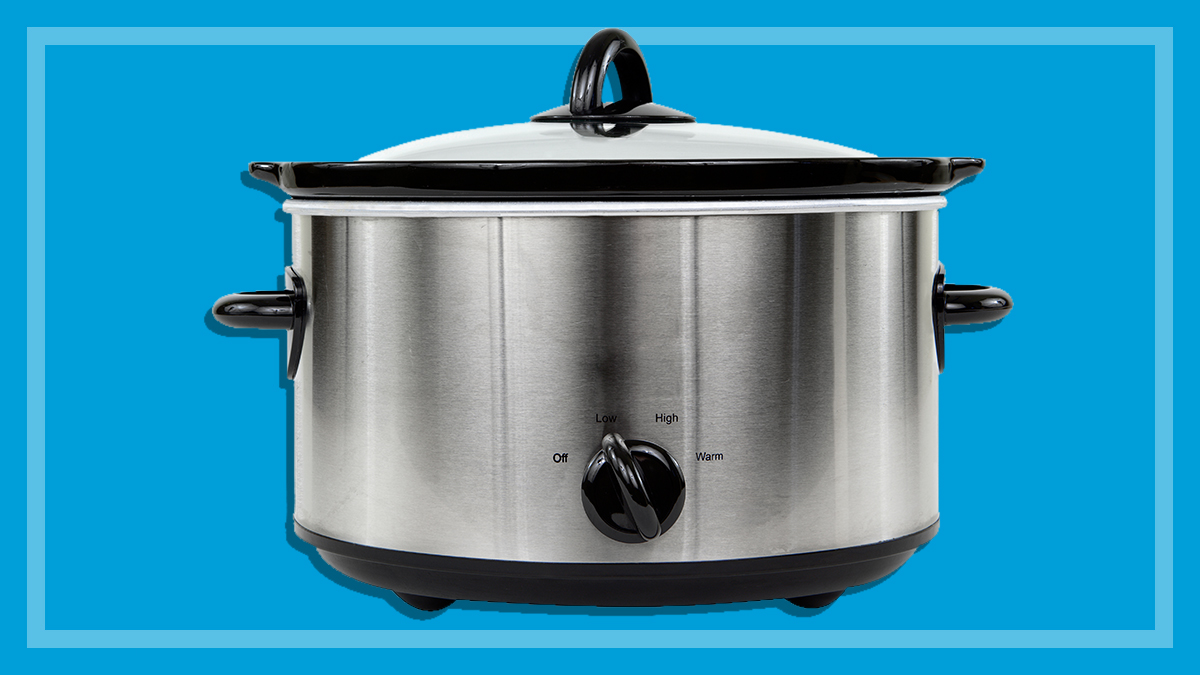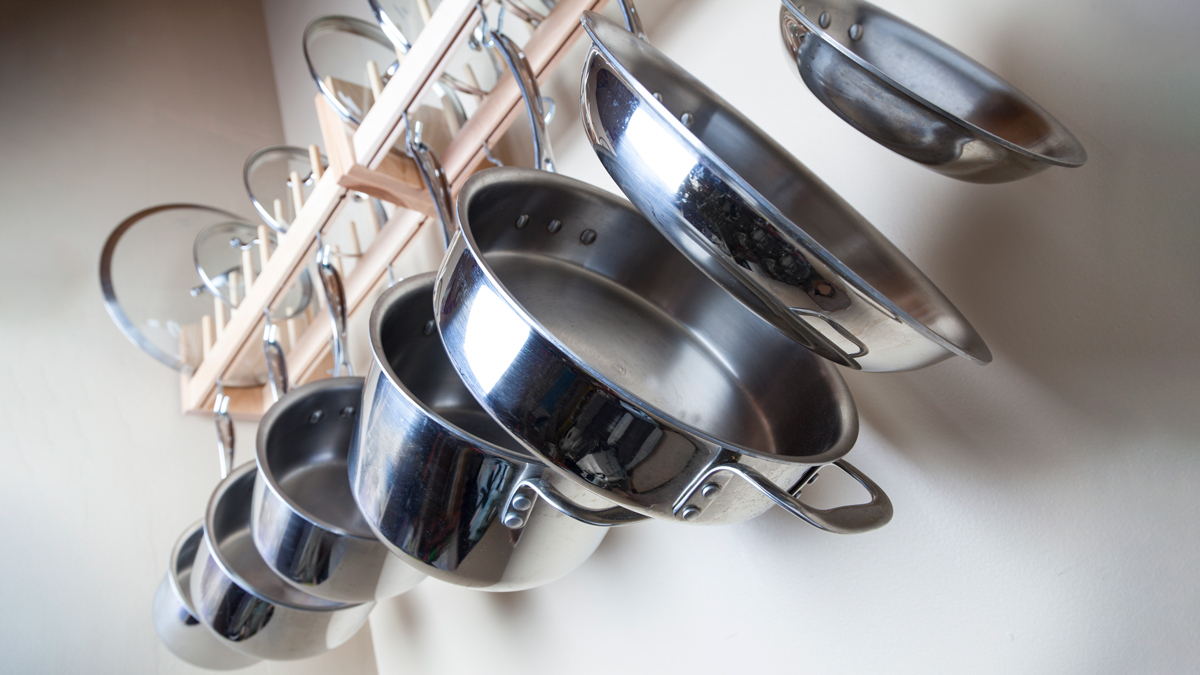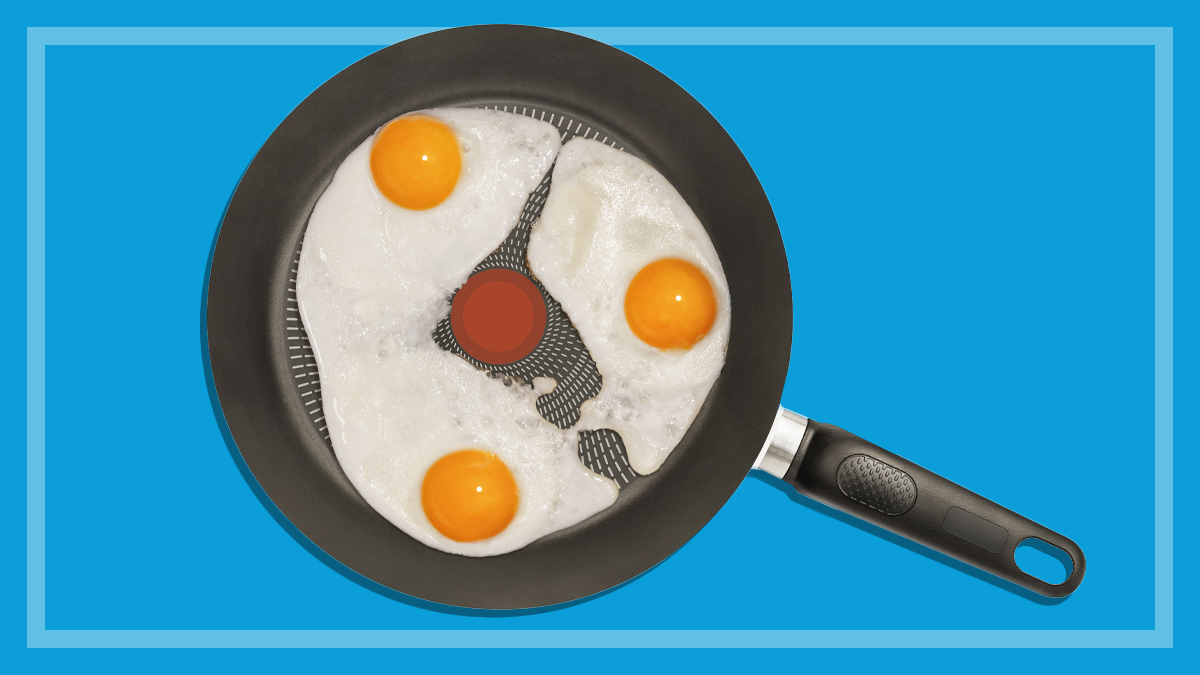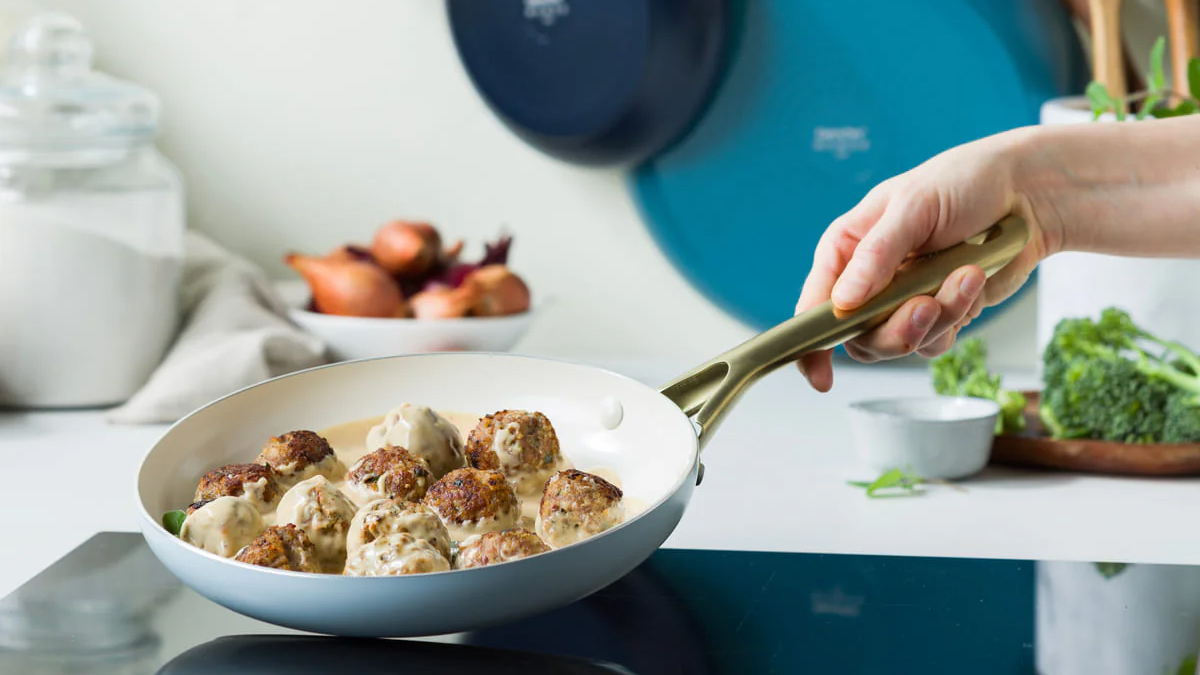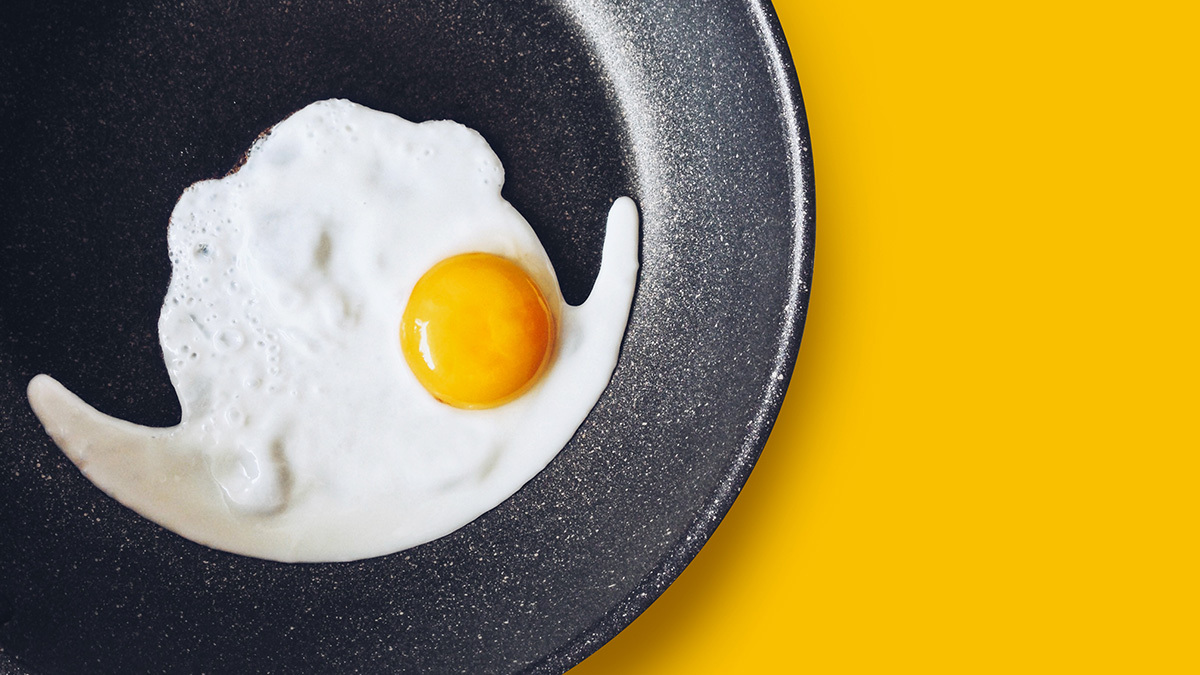Get our independent lab tests, expert reviews and honest advice.
Is the Zega Digital self-cooking pot worth it?
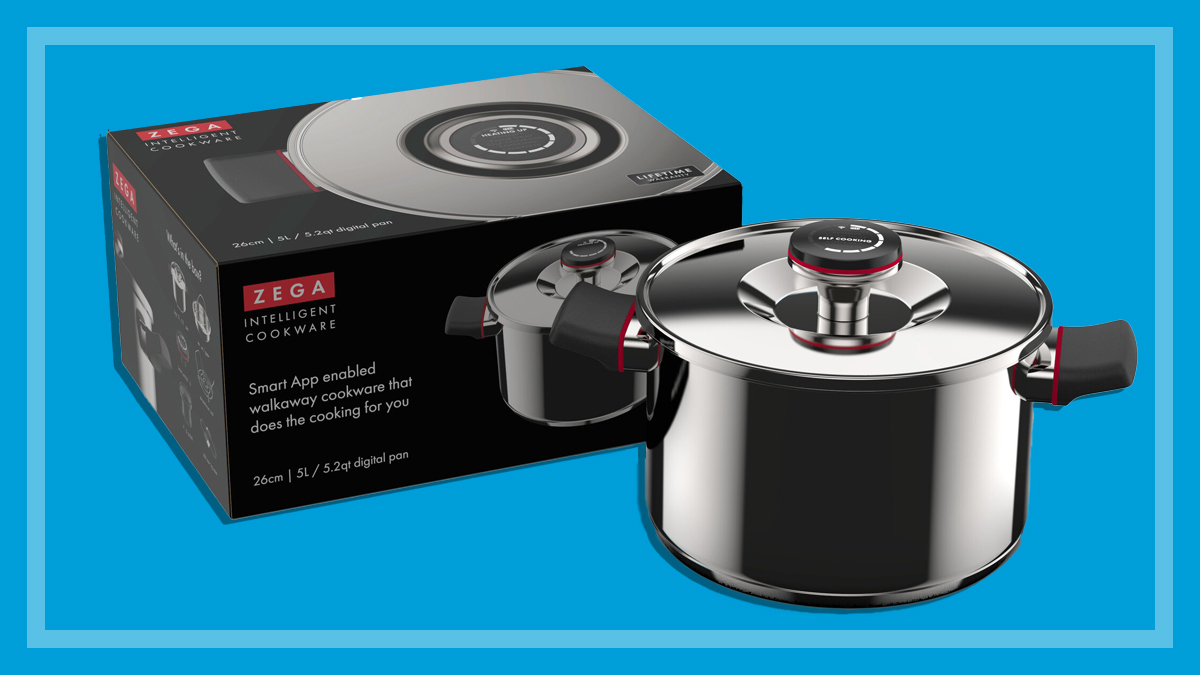
CHOICE verdict
The Zega Digital self-cooking pot failed our performance tests, and doesn’t deliver on its self-cooking or energy-saving promises. More concerning is that it fails in terms of food safety, leaving us with undercooked chicken in one test. For these reasons we don’t recommend this product. While the concept sounds promising, we’ve found too many flaws and believe it still has a way to go in terms of recipe and product development. While the pot itself is well constructed, has a large capacity and is easy to use, we believe you’re better off spending your money on a slow cooker.
Price: $299
Contact:
zega.com.auOn this page:
- What is Zega cookware?
- How the Zega Digital works
- How it performs
- Zega Digital vs a slow cooker
- Zega Digital vs cast-iron cookware
- Will a Zega save on energy costs?
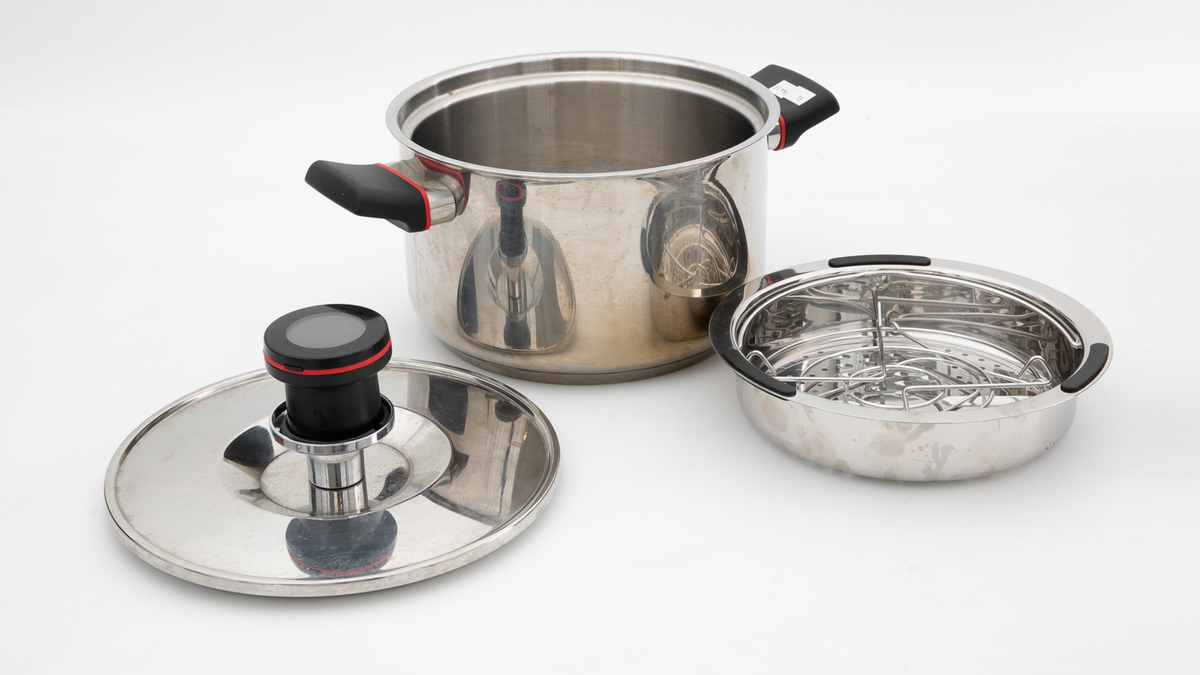
What is Zega cookware?
Zega Intelligent Cookware offers two products – Zega Analogue and Zega Digital, two app-enabled 5L saucepans that are suitable for all cooktops.
We tested the Zega Digital which comes with an illuminated SmartControl on the lid, charging dock for the smart control, USB charging cable, elevated meat rack and steamer/grater.
The pot has a double wall and is thermally insulated. The idea is that you prepare your meal following the instructions on Zega’s app, and only use the cooktop to heat the food up to the desired temperature before turning off the cooktop and leaving the cookware to “self-cook”.
Once the timer ends on the app, your meal is ready. Well, it should be, but we didn’t find this to be the case.
How the Zega Digital works
First, you’ll need to download the Zega app to use this piece of cookware. The SmartControl knob with digital thermometer then locks into the lid of the pot to control the process. It’s Bluetooth-compatible so you’ll need to sync the app to the SmartControl.
You can then select a recipe from the app, which will have a list of ingredients and method. Heat the pot on your cooktop and add in the ingredients for searing and browning, before placing the lid on and bringing the ingredients to the required cooking temperature (Zega says this can take five to seven minutes). It then alerts you to switch off the cooktop, and the self-cooking timer starts on the app.
No stirring is required – or allowed. The double wall is thermal-insulated to retain heat and continue cooking without gas or electricity, so you can’t lift the lid to stir food or add in any forgotten ingredients. Doing so will drop the temperature significantly inside the pot.
No stirring is required – or allowed … doing so will drop the temperature significantly inside the pot
You can also use your own recipes by using the QuickCook function on the app and following the instructions. You’ll be alerted to switch off the stove when your food has heated to the required temperature. The app has been programmed with the recommended self-cooking time, which you can adjust or extend to suit if you’re using the manual setting.
Sounds great, right?
Well, let’s point out some things you should know before we even get to how it performs.
First, the SmartControl knob needs to be cleaned separately (not in the dishwasher) and also needs to be charged by removing it from the lid and attaching it to the charging dock. It can take up to four hours to fully charge.
Next, it only works within Bluetooth range (up to 10 metres), so if you leave the house you’ll lose connection and won’t receive an alert when the Zega has finished cooking. Not to mention connection can drop out even when you’re at home, as Bluetooth can have trouble staying linked through brick walls or if you (and your phone) are a few rooms away.
Finally, the digital thermometer would be great if it actually kept tabs on the temperature inside the pot. All it does, however, is tell you when the temperature inside the pot is high enough for you to turn off the cooktop and start “self-cooking”. No actual temperatures are displayed on the control or app.
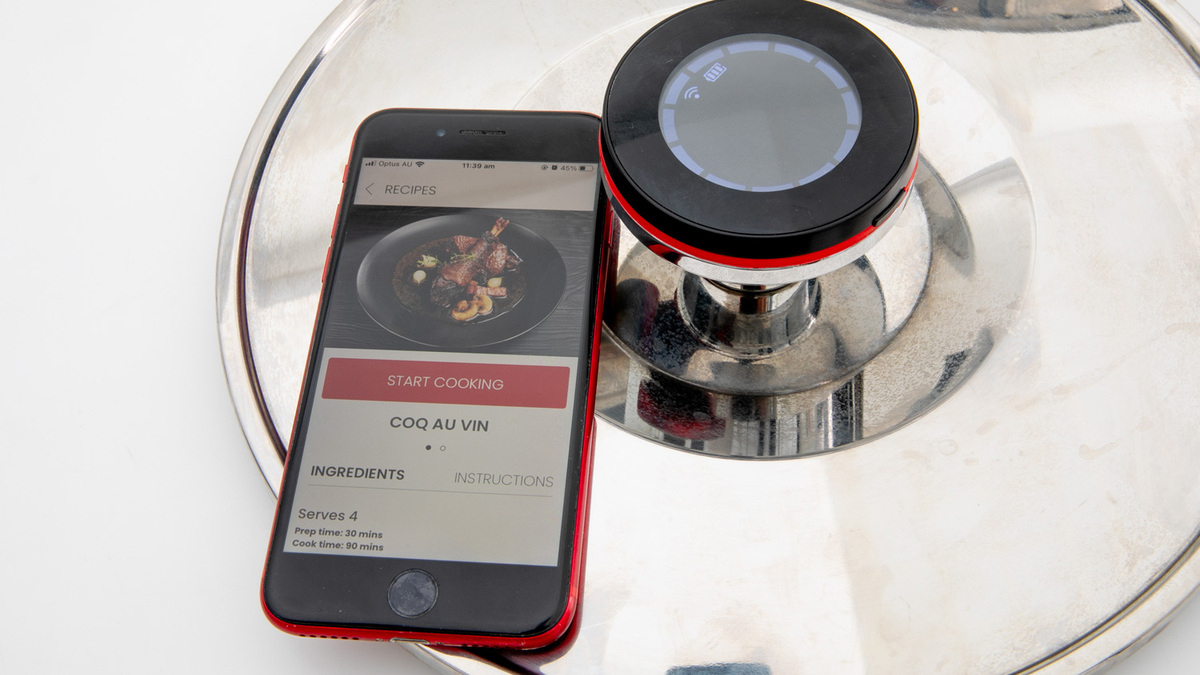
How it performs
The Zega Digital performs poorly, with disappointing results across the range of cooking tests. Our home economist Fiona Mair cooked lamb shanks, chilli beef, beef goulash, coq au vin (chicken cooked in wine), bolognaise and rice (jasmine and brown).
Most concerning was the result for the coq au vin. We followed the instructions on the app, which left us with undercooked, partially raw chicken that was clearly unsafe to consume. The Food Safety Information Council states that chicken must be cooked to 75°C, but we measured the chicken to only be 66°C. It required an extra hour and a half of cooking time on the stove to make it edible.
The chicken required an extra hour and a half of cooking time on the stove to make it edible
The lamb shanks and vegetables were undercooked and the sauce watery with that recipe, and required an extra three hours of cooking time in the oven.
The beef goulash and chilli beef needed up to an extra three hours of cooking on the stove, to soften the meat and develop and thicken their sauces.
When it comes to cooking rice, the app recipes treat all types of rice the same (a red flag already). The brown rice was uncooked and inedible, and the jasmine rice instructions only cooked half of the rice in the pot – which still tasted chalky – and left the other half undercooked.
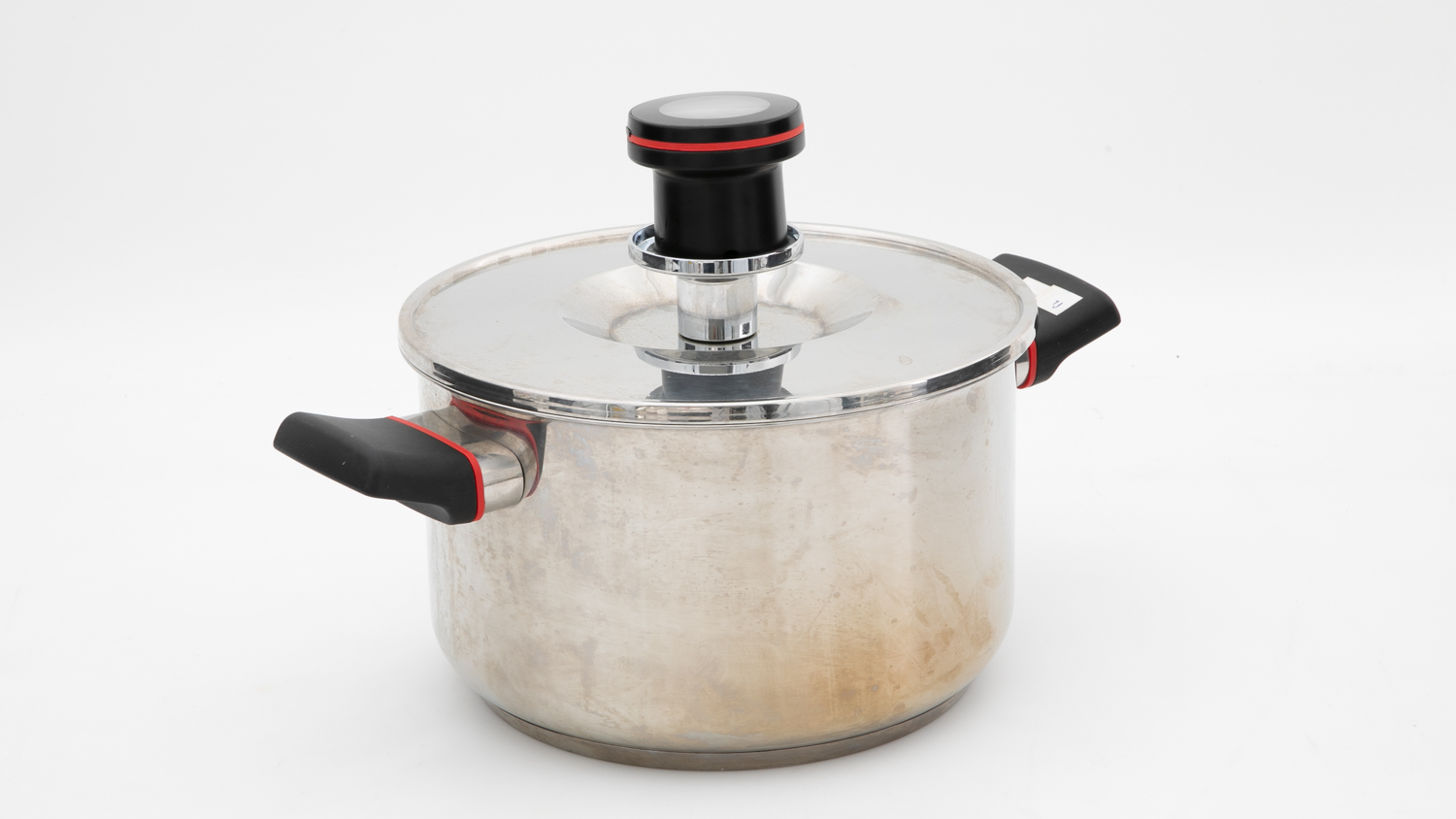
Fiona found the cooking times to be far too short to allow tougher cuts of meat or meat that’s on the bone to break down.
The recipes are also lacking in detail and necessary instructions; there are no weights for the portion sizes of meat, and no instructions to state what it can’t do (e.g. cook soaked beans).
The digital display only indicates ‘heating up’, and when the pot has reached temperature it will indicate to start ‘self-cooking’, which is when you need to remove it from the heat source and the timer starts to count down on the app.
Zega claims the pot will keep food above the USDA food-safe minimum internal temperature of 67°C for four hours. But we found that just three hours after self-cooking began the temperature dropped to 60°C. After four hours, it was 50°C.
Not only will it not cook your food, it also dips into the ‘danger zone’ below 60°C, which can cause food poisoning
CHOICE home economist Fiona Mair
“Not only will it not cook your food, it also dips into the ‘danger zone’ below 60°C, which can cause food poisoning,” says Fiona.
Zega says the recommended minimum self-cooking times can be adjusted and extended, and that the cookware works better when the ingredients are cut into smaller sizes (3–5cm). Zega also says the self-basting lid means that your recipes need approximately 25 to 30% less added liquid (water or stock) than conventional cookware, and you can use a thickening agent at the end to get your desired sauce consistency.
All we can say is that we followed the recipes and were left with unsatisfying and potentially dangerous results.
Zega Digital vs a slow cooker
A slow cooker is a benchtop appliance, while the Zega is a piece of cookware that needs to be used on your cooktop. However, they basically do the same thing: you sear your meat, add ingredients, put the lid on and leave it to do its thing. They’re best used for meals that require liquids to cook and that use longer cooking times.
Both cooking methods can also be left unattended. However, the Zega app is useless if you leave home with your phone and it drops out of Bluetooth range.
Ultimately, we think you’d be better off buying one of our recommended slow cookers
The Zega marketing also raves that the pot can achieve its advertised “self-cooking” without a heat source, but all meals we tested needed extra cooking time on the stove once self-cooking was finished.
Ultimately, we think you’d be better off buying one of our recommended slow cookers, and you can pick one up for a fraction of the cost of the Zega.
Zega Digital vs cast-iron cookware
We used the Homestyle Bolognaise recipe on the Zega app and followed the exact ingredient measurements, sauté time and method in both the Zega Digital and in a cast iron pot.
We received very similar results for both in terms of texture and flavour, with both requiring an additional hour and a half cooking time on top of what was specified in the recipe.
Will a Zega save on energy costs?
We measured the energy used while cooking with the Zega on an induction cooktop, and compared it to using a slow cooker.
Using a slow cooker on low for eight hours, three times a week will cost you $36 a year in running costs, compared to $25 a year when using the Zega on medium-high setting for 17 minutes, three times a week.
The Zega ‘self-cooks’ without any heat source for up to two hours and 45 minutes, allowing for energy savings. But as most recipes required extra cooking time (one to three hours depending on the recipe) this negates any energy cost savings.
The final word from our testers
While the concept sounds promising, the product fails to deliver and needs a lot more work in terms of product and recipe development.
The pot on its own is good quality, with a heavy base and a snug-fitting lid. But it’s expensive, it’s not oven-safe, and you could spend your money on a good slow cooker or Dutch oven and likely be much happier with the results.
“Overall this is an unnecessary piece of cookware,” says Fiona. “Avoid spending $299 on cookware that gives disappointing results and requires extra cooking time to develop flavour, soften meat and thicken the sauce.”

